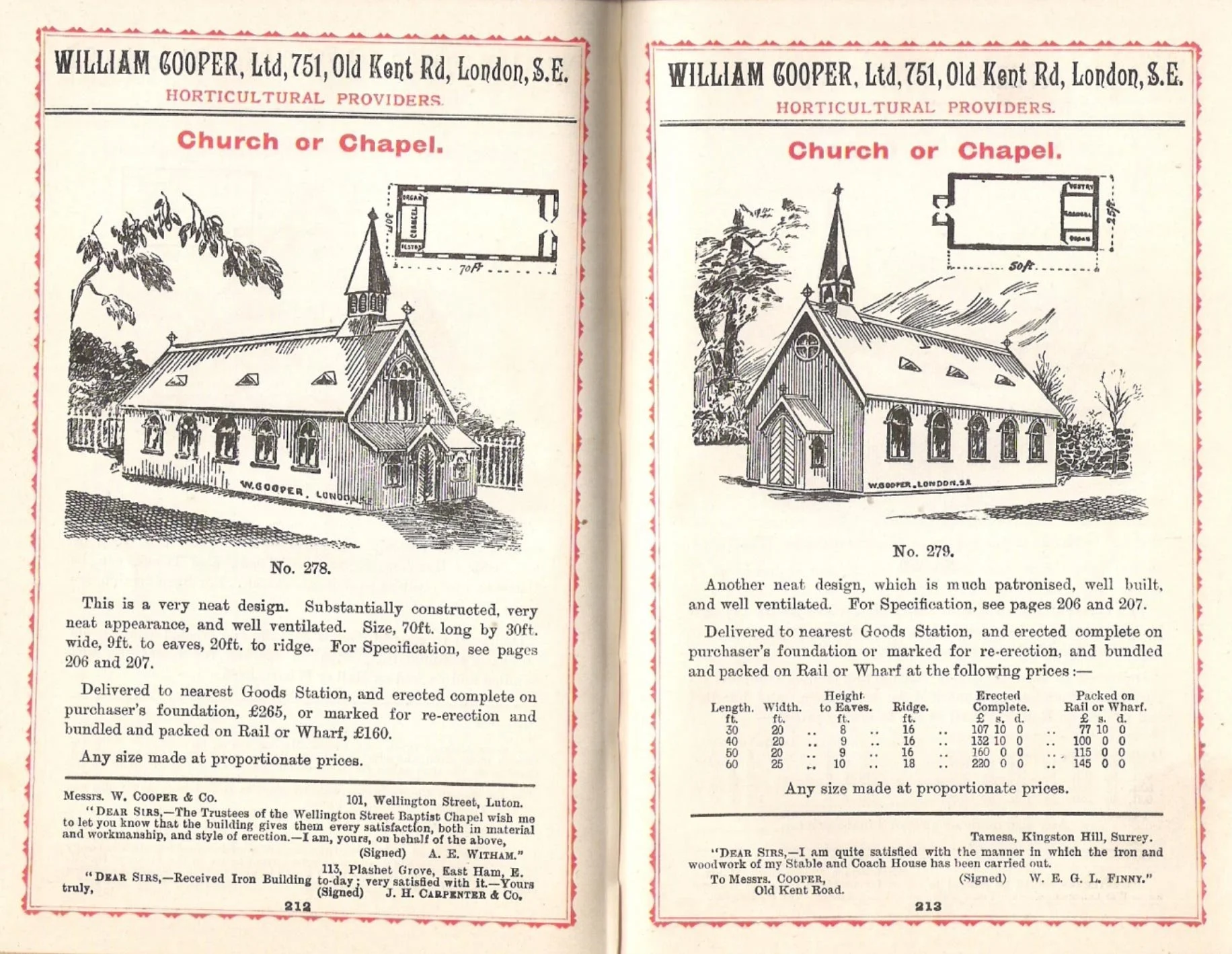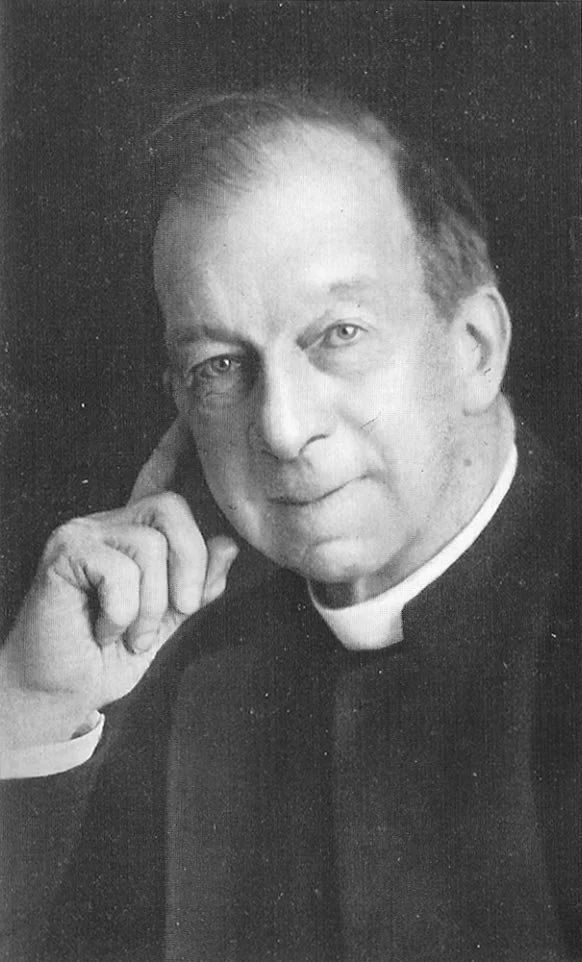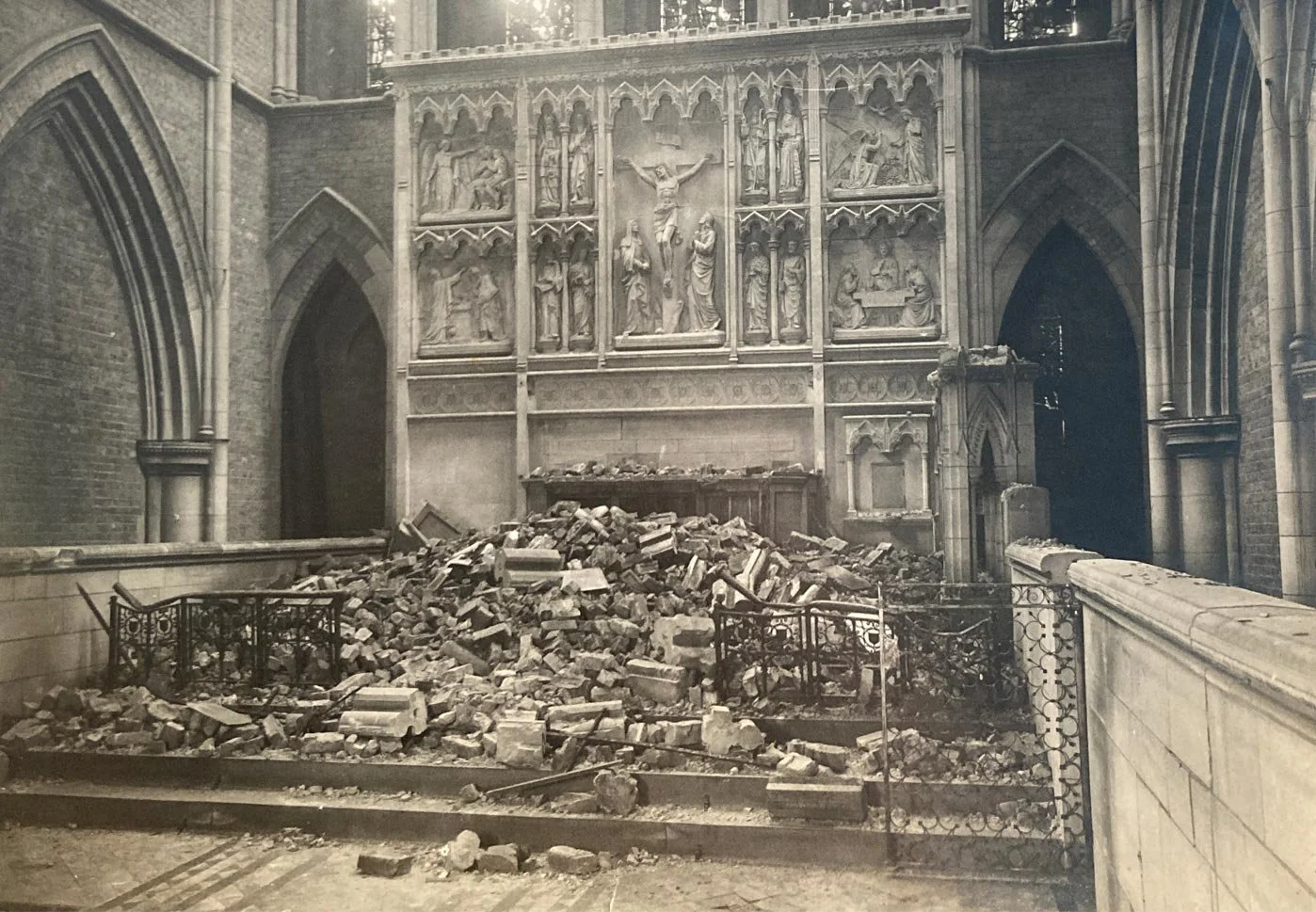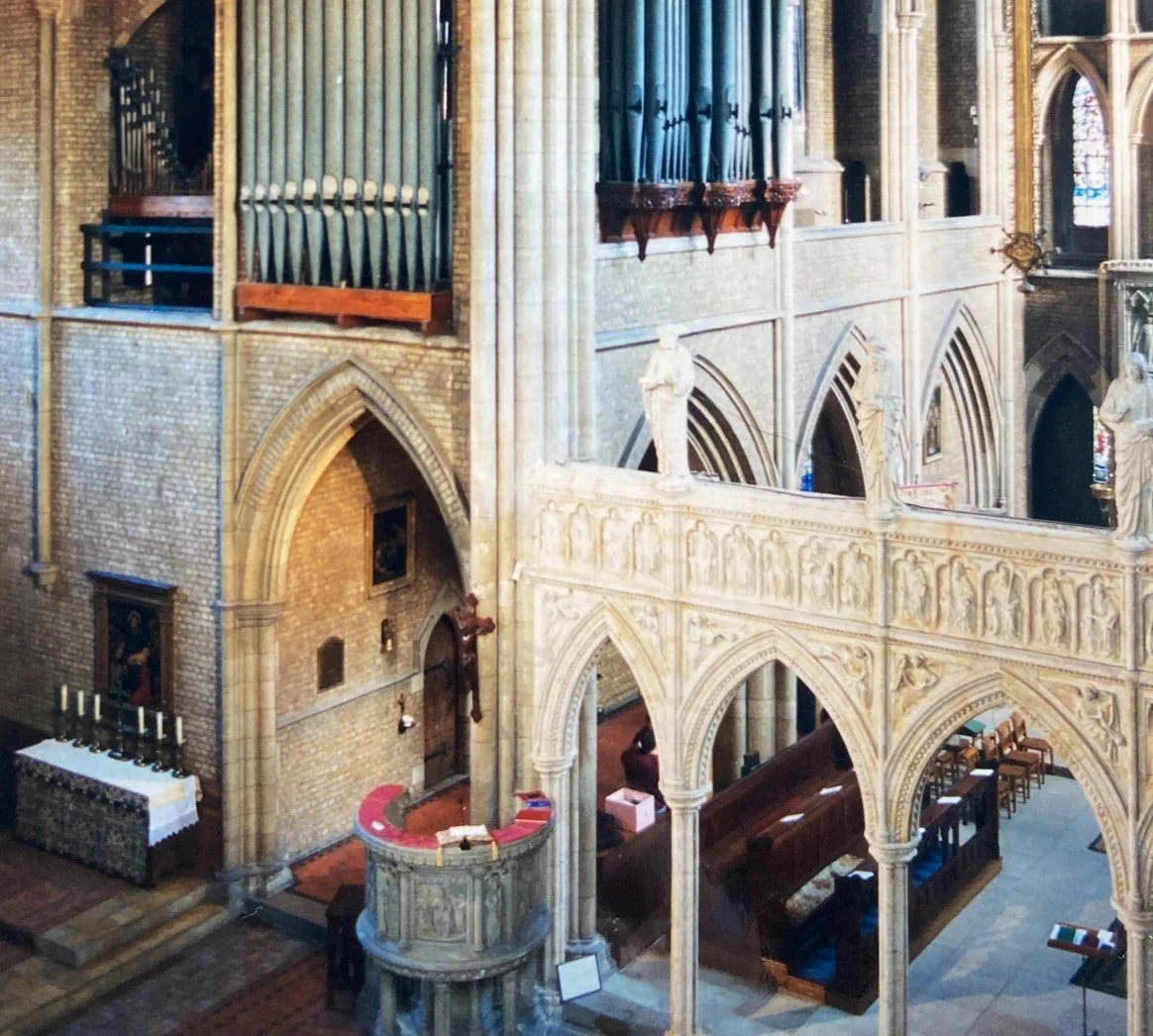Our History
A Church rooted in Faith & Community
Welcome to St John’s, Upper Norwood, a place of worship, music, and community for over 150 years. A church has stood on this site since the 1870s, bearing witness to God’s enduring love among the people of this vibrant corner of South London.
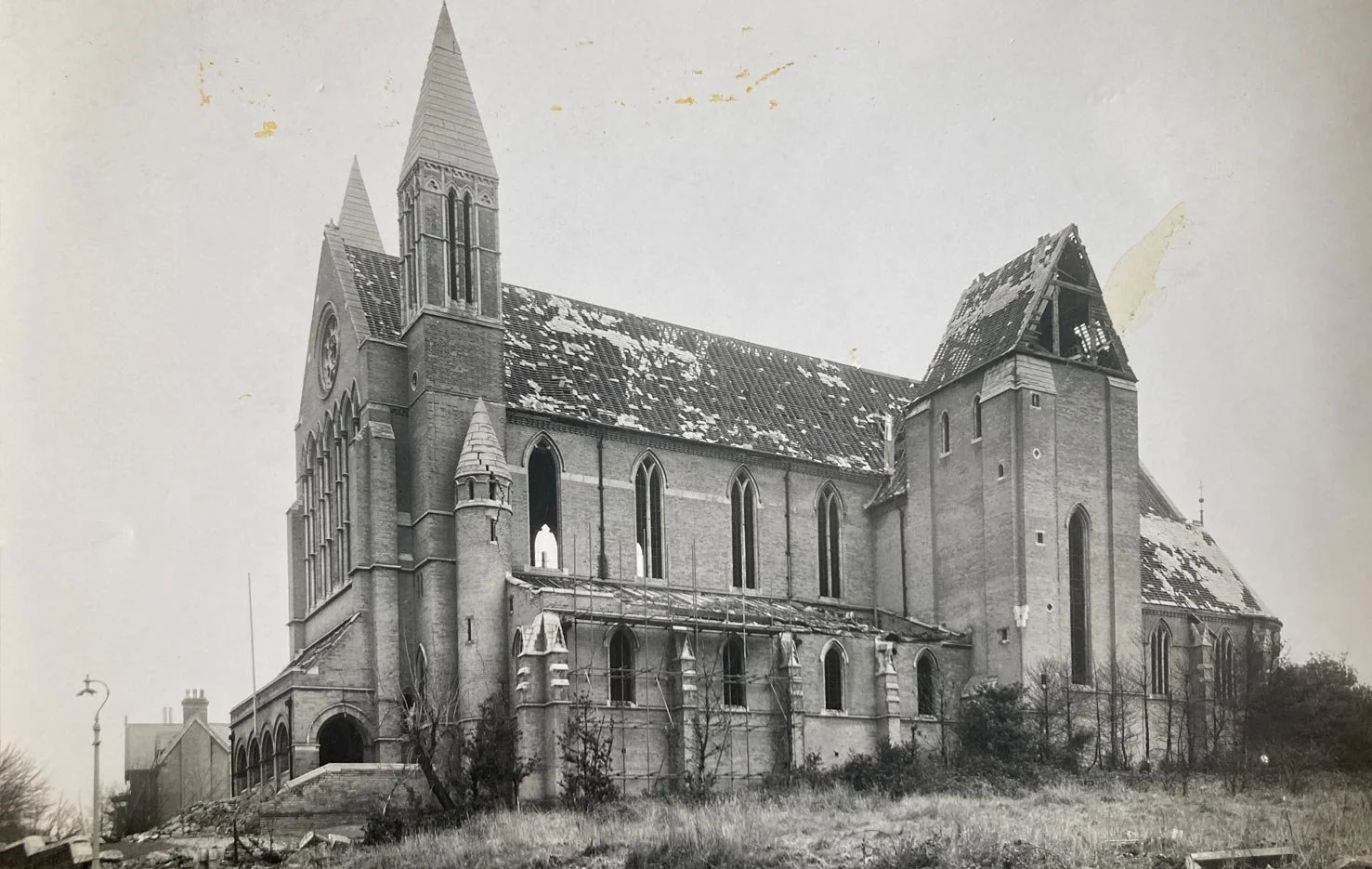
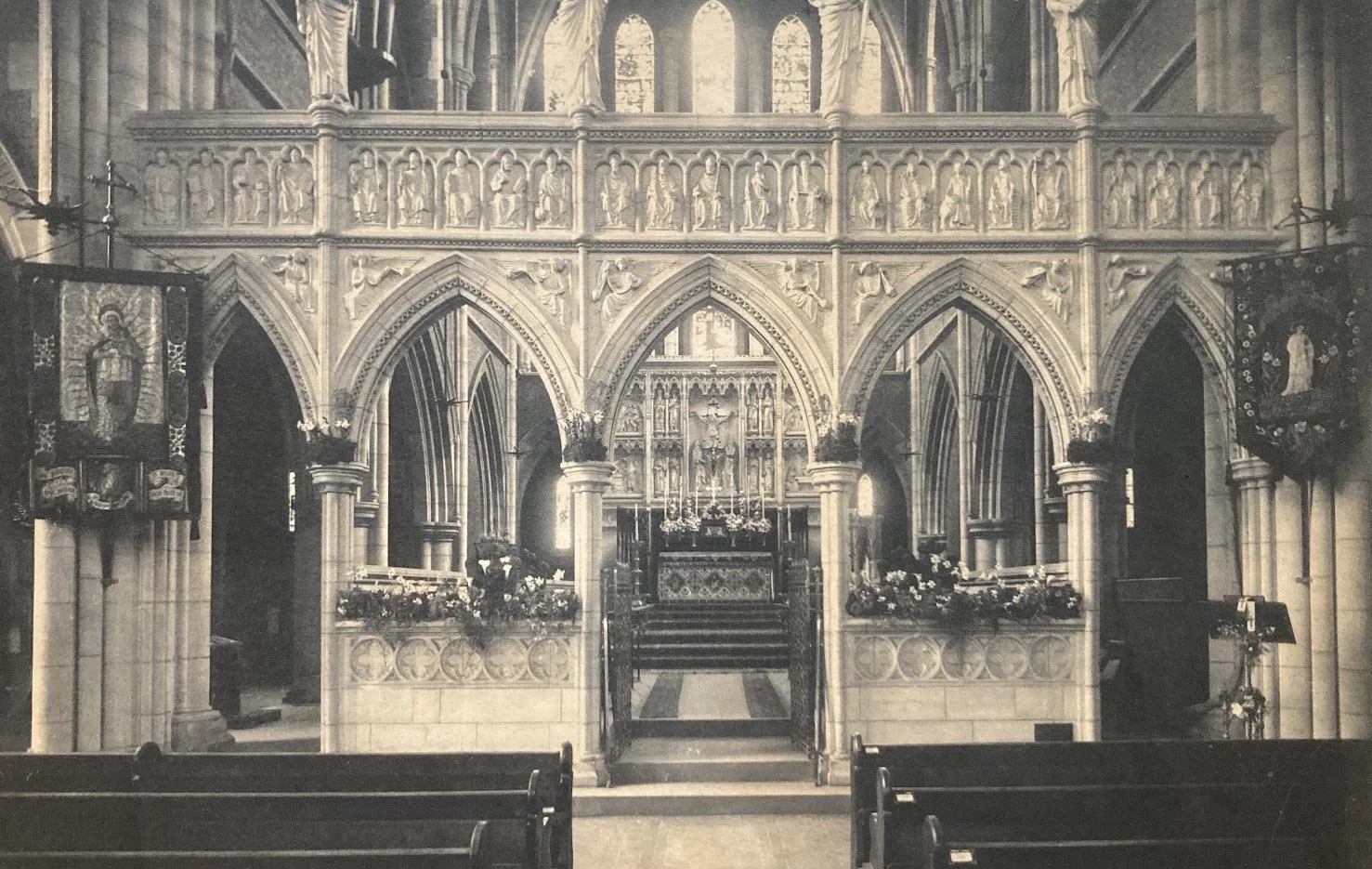
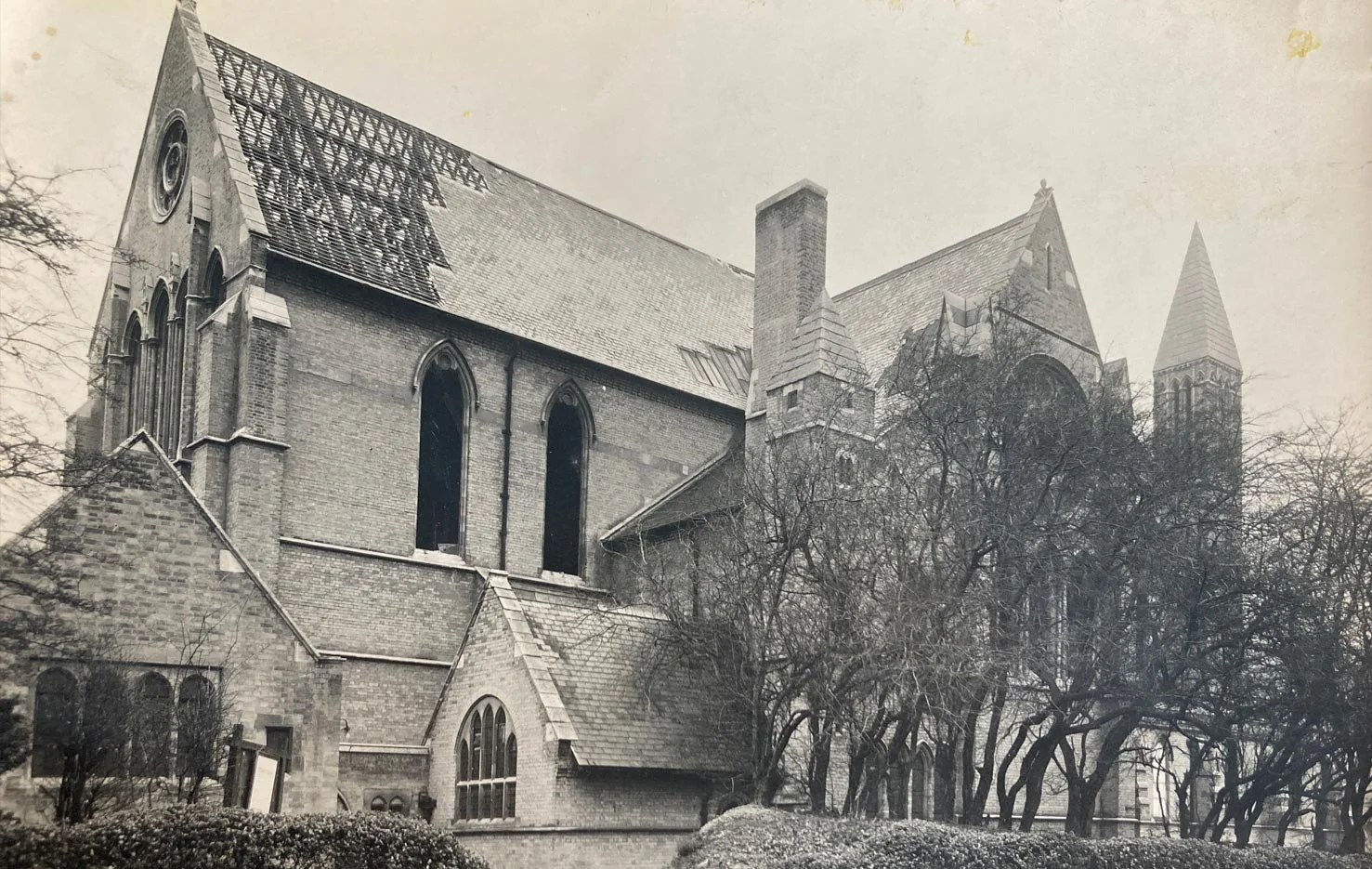


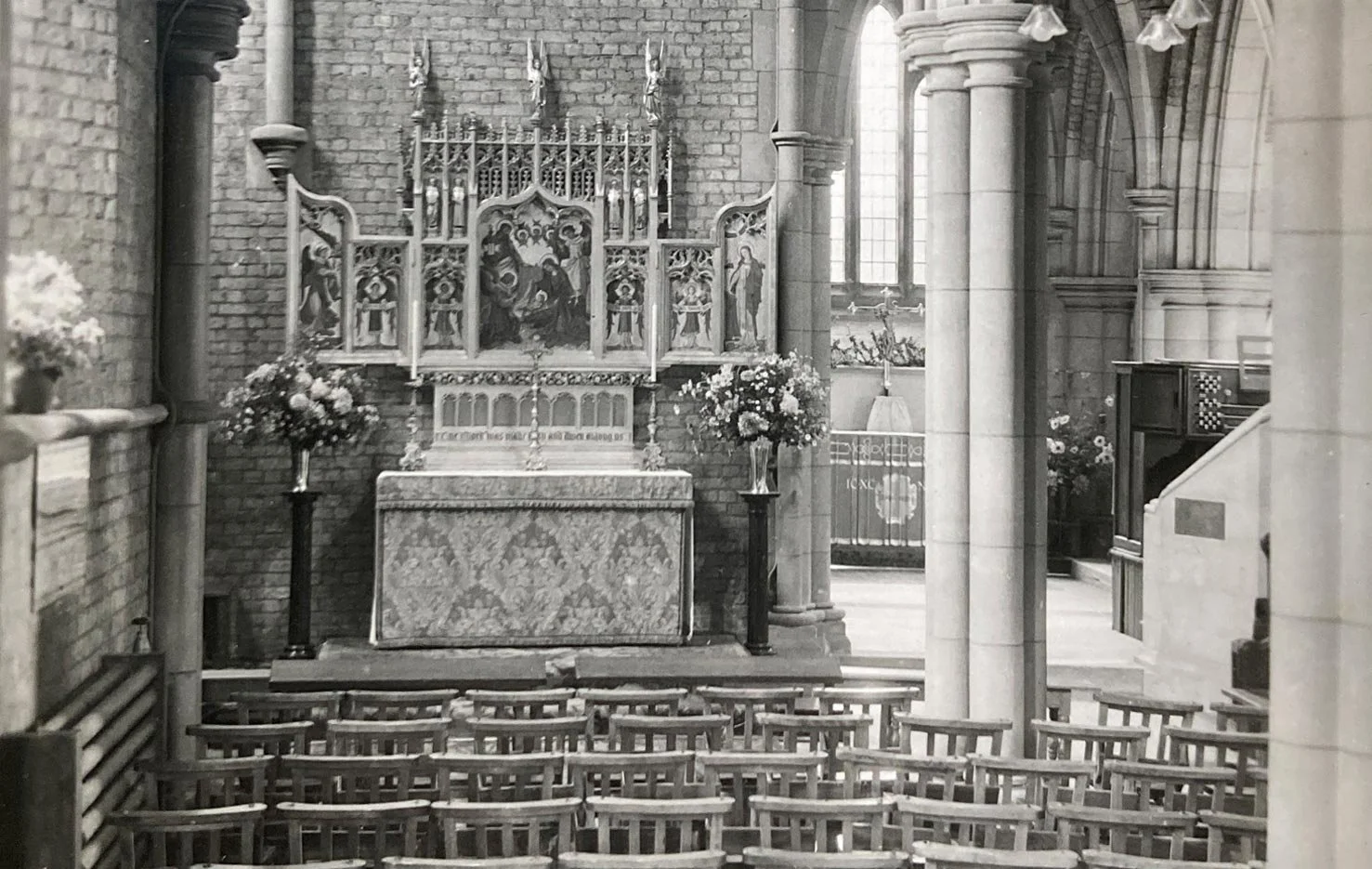
Corrugated iron churches advertised for sale in William Cooper Ltd’s catalogue c. 1900.
Foundations in Iron & Vision
The story of St John’s began in the early 1870s with the construction of a large iron church to serve the growing Upper Norwood population. In October 1875, the structure was relocated to the current site at the corner of Sylvan Road and Auckland Road—an elevated and scenic spot once known as One Tree Hill, overlooking Kent and the North Downs.
Known affectionately as “the Church in the Woods,” it quickly became a spiritual hub for the area. Two priests-in-charge—Philip Kingswood and Thomas Helmore—led the fledgling congregation. Helmore, a notable figure in the Anglican choral revival, helped establish the strong musical tradition that continues to define St John’s today.
Building the Permanent Church
By 1876, St John’s had become a parish church under its first vicar, Reverend William Fairbairn La Trobe-Bateman. Faced with a large, diverse new district—spanning over 600 acres of Upper Norwood and Thornton Heath, including some of the area’s poorest streets—Bateman was determined to create a lasting and beautiful place of worship.
He launched a major fundraising campaign, supported by generous parishioners and an early endowment fund. With backing from the Ecclesiastical Commissioners, Bateman appointed renowned Victorian Gothic architect John Loughborough Pearson to design the new church. The result was a grand and inspiring building, completed in 1887 (though the spire was never added), that still defines the skyline today.
Bateman once described the parish as “a district in real need, materially and spiritually.” His leadership and vision not only gave shape to the church itself, but to a vibrant, socially active parish—complete with mission chapels, Sunday schools, working men’s clubs, and practical aid for the community.
Details of the Church
Built
1878-87
Architect
J L Pearson
Listing
2*
Photo: The Reverend William Fairbairn La Trobe-Bateman, the first vicar of St John’s
War damaged 1944
War Damage & Restoration
In the closing days of World War II, several doodlebug bombs struck the building, causing extensive roof damage. Undeterred, the community bricked up the north aisle to create a temporary worship space and began the long task of restoration.
The project was led by Fr Eric Bailey, whose leadership not only ensured the church’s physical recovery but also helped secure a financial legacy that continues to support the parish.
💬 Want to learn more?
Read Anthony Ashby’s article in The Norwood Review for a detailed look at the church’s early history.
Modern Challenges & Renewal
In the early 2000s, structural issues reappeared—this time on the south side of the building, where significant cracking appeared in the tower and south aisle. Temporary wooden buttresses were installed, and recently, underpinning work has been undertaken to ensure the long-term stability of this historic structure.
🏛️ Our work to preserve and restore this iconic building continues…
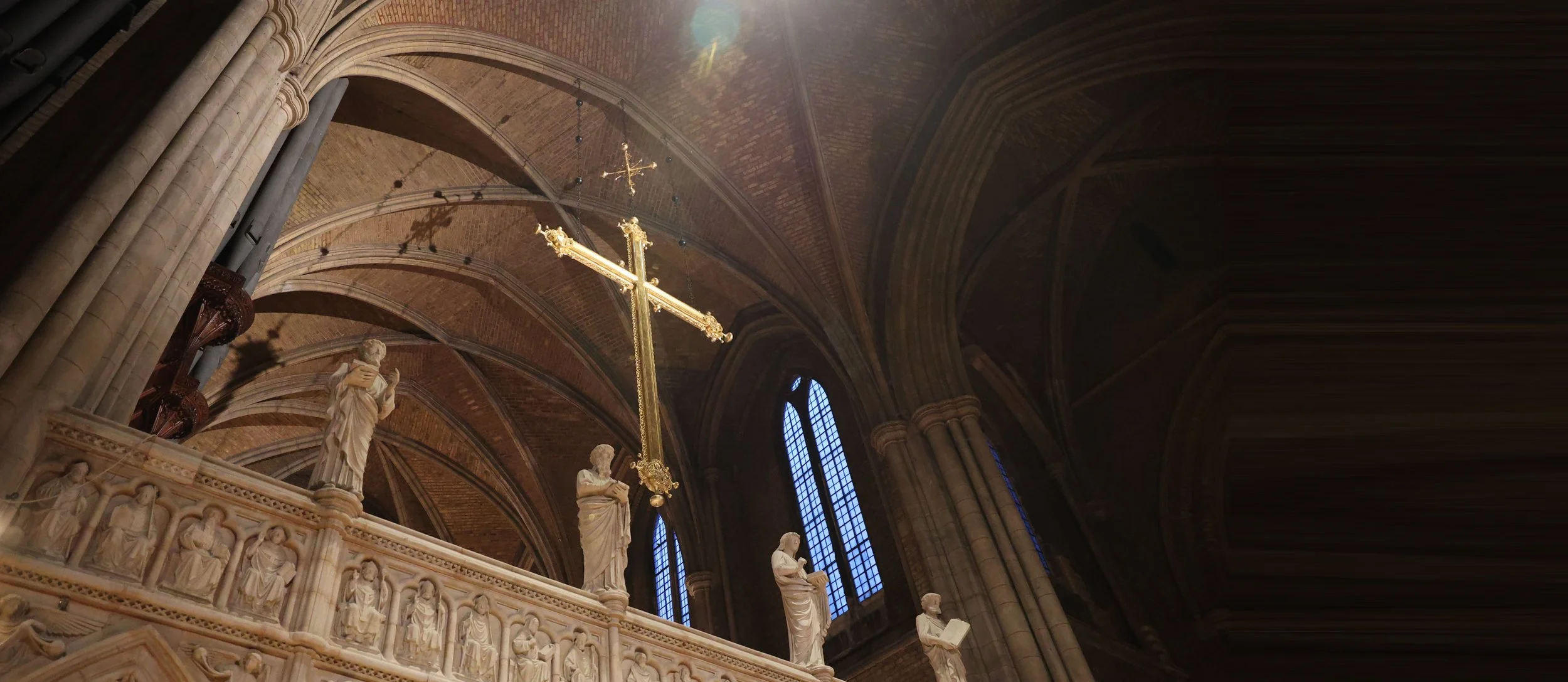
Be Part of the Next Chapter
For nearly 150 years, St John’s has stood as a beacon of faith, beauty, and community in Upper Norwood. Every gift helps preserve this historic space and support the life-changing work that continues within its walls today. Your generosity helps keep the story alive.

